Reviews
Twinkle, Twinkle, “Killer” Kane
William Peter Blatty
USA, 1980
Credits
Review by Adam Balz
Posted on 02 October 2010
Source Warner Brothers DVD
Categories 31 Days of Horror VII
William Peter Blatty is an anomaly. A writer of comic novels and screenplays for over a decade, he used idle time in the late 1960s to write The Exorcist. When his bestseller became an Oscar-nominated film, he took home one of only two statuettes, for Best Adapted Screenplay. (The other went to Robert Knudson and Christopher Newman for Best Sound.) Five years later, he modified his seventh novel Legion for the screen and took the role of director; at the studio’s insistence, he added a short scene of exorcism, and the film became The Exorcist III. It marked only his second effort at helming a feature film. Ten years previous, Blatty had donned the title of director for the first time with The Ninth Configuration, based on his novel of the same name. And while the unexpected third installment of The Exorcist is often viewed as Blatty’s sole contribution to horror cinema, it’s his directorial genesis - a brutal, exhausting, and sadly overlooked cult classic based around a makeshift mental hospital in the Pacific Northwest - that exemplifies his underutilized skills as a filmmaker.
Blatty’s directorial debut begins, however, five years prior to its release, forty minutes into William Friedkin’s The Exorcist. Regan, a possessed little girl, appears in the doorway to the family room of her home and is greeted by the alcohol-blurred gazes of a dozen illustrious men and women, guests at her mother’s party. One, a middle-aged astronaut, catches her attention, and as he looks down at her she says, “You’re going to die up there.” She then releases a stream of urine onto the carpeting and, amid a flurry of apologies and excuses, is rushed upstairs by her mother. The astronaut, in both Blatty’s novel and Friedkin’s film, is nameless—a man whose fate remains uncertain as the storylines close. In The Ninth Configuration he reappears, now a fully rounded character with a name: Billy Cutshaw. He is also completely insane.
Cutshaw is among some two dozen patients at an improvised outpatient home, a Gothic castle nestled like a stone in the rolling green hills of Washington state. He is an inconsistency, a man prone to random and sometimes profound utterances doused in both humor and brevity. Cutshaw lost his bearings before a scheduled voyage to the moon; unraveling at dinner two days before, during which he drew a gash of ketchup across his neck and told the National Aeronautics and Space Administration “not to order the swordfish,” he aborted the mission during countdown. (All the other men at the institution were, in contrast, committed while on active duty.) Since then, he has had full reign over the castle’s staff. The twenty-some men act in full defiance of Groper, a bulldog major with steel eyes and a short temper, and the castle doctor, a friendly if not entirely serious Colonel Fell.
When Colonel Kane arrives, he finds the hospital in disarray. Assembled for revelry, the men instead sing an off-key rendition of “You Are My Sunshine,” and a company salute is accompanied by the sounds of splattering urine as one soldier relieves himself—a brief but seemingly important reference to The Exorcist. Kane says nothing in response. Instead, he looks casually over the group and walks away. He is an imposing man, difficult to read; framed with a scar running from his upper lip to his nose, his face seems incapable of sustaining emotion. When he talks with his patients - with Lieutenant Reno about his all-dog staging of Hamlet, with Lieutenant Bennish about his missing “flying belt,” with Captain Fairbanks about the atomic principles of a castle wall - he listens intently but communicates little. The men begin to suspect that he’s a patient himself, referencing a character played by Gregory Peck in Spellbound, and soon use the mental state of Shakespeare’s prince, not to mention his pragmatic use of theatre, to dupe Kane into indulging their newfound obsession: reenacting The Great Escape in the cold stone cellar. Kane has the staff dress in full Nazi attire to complement the fantasy; when Groper confronts him late at night, protesting the dress, Kane erupts into a violent rage. It’s one scene in a long line of questionable reactions from a man who, we’re told, is a respected psychiatrist.
It’s from Kane’s sessions with Cutshaw, however, that Blatty finds the tension that drives his film forward. This includes a climactic discussion about the existence of God. Cutshaw, using the horrors of the war-torn world as his proof, announces that God doesn’t exist. When Kane replies that there is goodness in the world and therefore, by Cutshaw’s logic, God must exist, Cutshaw refuses to listen. It’s only later, when Kane’s history is finally revealed to the patients - his service in Vietnam, his breakdown, his killing of a Vietnamese boy, all transforming him into the infamous “Killer” Kane - that Cutshaw denounces Kane for his hypocrisy and escapes to a nearby bar. In pursuit, Kane arrives in time to find him at the mercy of a biker gang that’s put off by his strange demeanor. Kane places himself in the gang’s sights and takes their abuse with no visible pain, all in the hopes of sparing Cutshaw, though his patience disappears when they turn their focus back to him: Kane descends into madness, and in only a few seconds he dispatches members of the gang one by one, tossing their bodies around the bar as though they weighed nothing. In essence, he returns to Vietnam and becomes “Killer” Kane once again, only now it’s to defend an innocent person through violence.
Perhaps the film’s most haunting scene is one in which we’re offered a dream about the moon. Dropped into the film with little context - is this Cutshaw’s mind or Kane’s? - we see an astronaut moving across the lunar surface. He plants a flag into the soil, then turns to face a crucified figure overlooking him. The astronaut opens his arms; we cannot see his face, nor the face of the man on the cross. The moon is a barren, lifeless place, something foreign and alien to us on Earth, and its emptiness in this scene is haunting—just a lone man and his Christ, his savior. In essence, the Pacific castle and the moon are depicted as one in the same: loose metaphors for the human mind, isolated places in which anything can happen and no one is safe.
More 31 Days of Horror VII
-

The Thin Blue Line
1988 -

The Ninth Configuration
1980 -
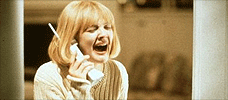
Scream
1996 -
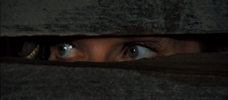
Dying Room Only
1973 -

Brain Dead
1990 -

Zombi 2
1979 -
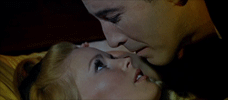
Dracula Has Risen from the Grave
1968 -

The Storyteller
1988-1989 -
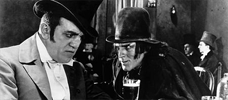
Dr. Jekyll and Mr. Hyde
1920 -
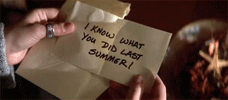
I Know What You Did Last Summer
1997 -
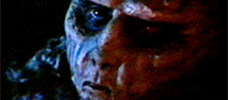
Don’t Be Afraid of the Dark
1973 -

Dark Age
1987 -
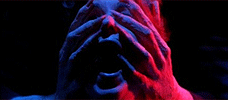
Inferno
1980 -
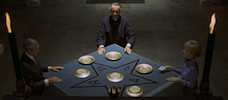
To the Devil a Daughter
UK / West Germany -

Trapped
1973 -
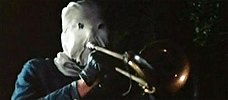
The Town that Dreaded Sundown
1976 -
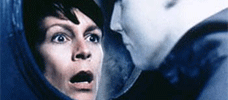
Halloween H20: Twenty Years Later
1998 -

Killdozer
1973 -
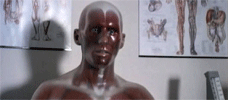
Pin
1989 -
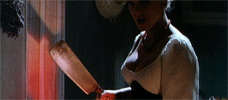
Frankenstein Created Woman
1967 -
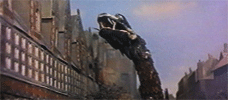
Reptilicus
1961 -
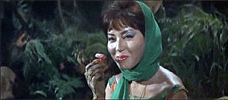
Matango
1963 -

I Still Know What You Did Last Summer
1998 -
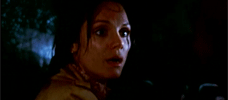
Night Terror
1977 -
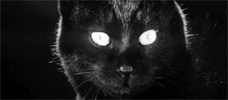
Kuroneko
1968 -

Demons
1985 -
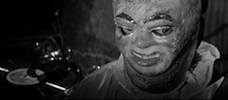
Paranoiac
1963 -
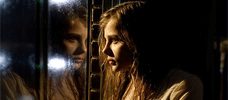
Let Me In
2010 -
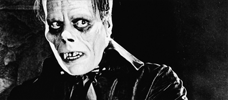
The Phantom of the Opera
1925
We don’t do comments anymore, but you may contact us here or find us on Twitter or Facebook.



